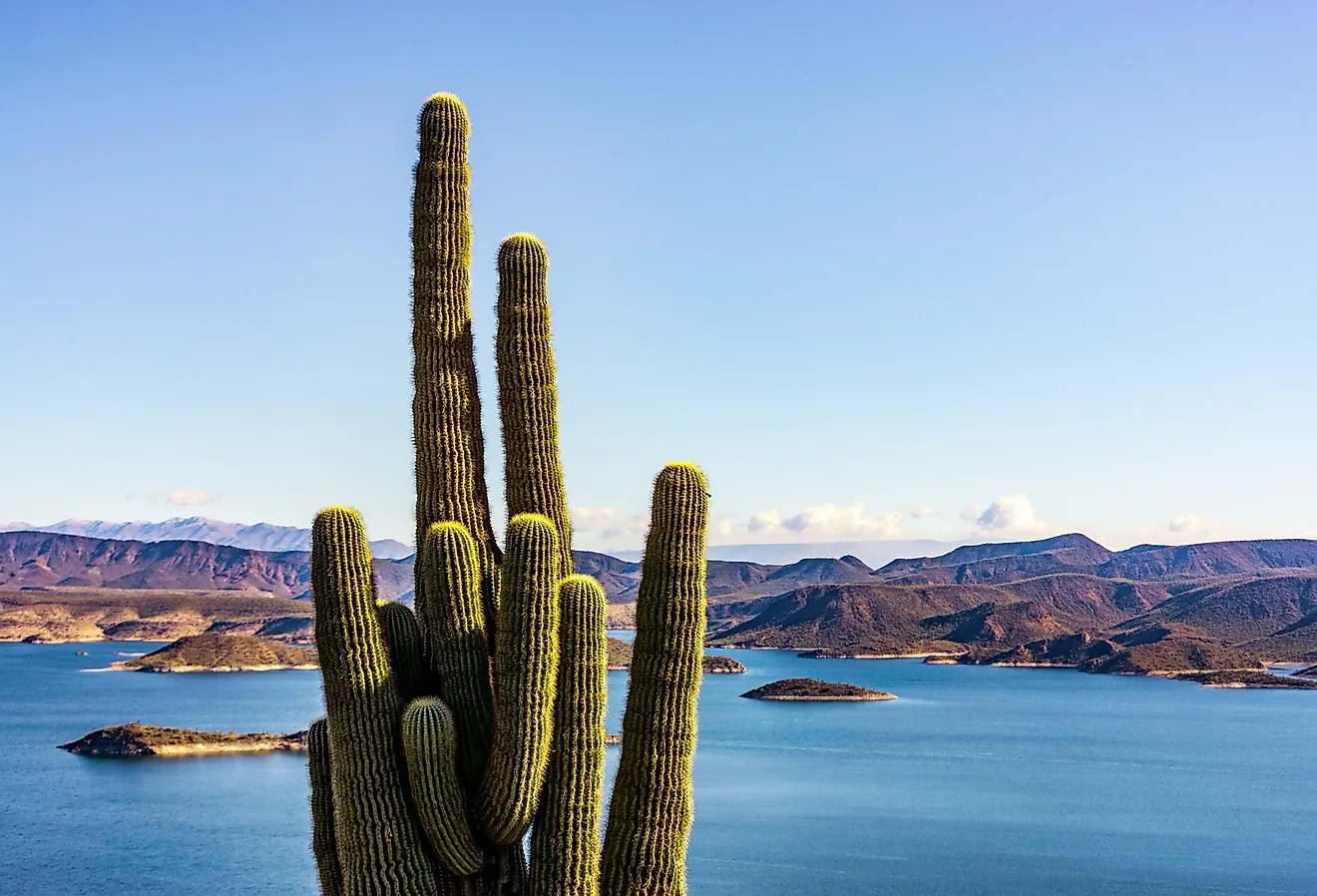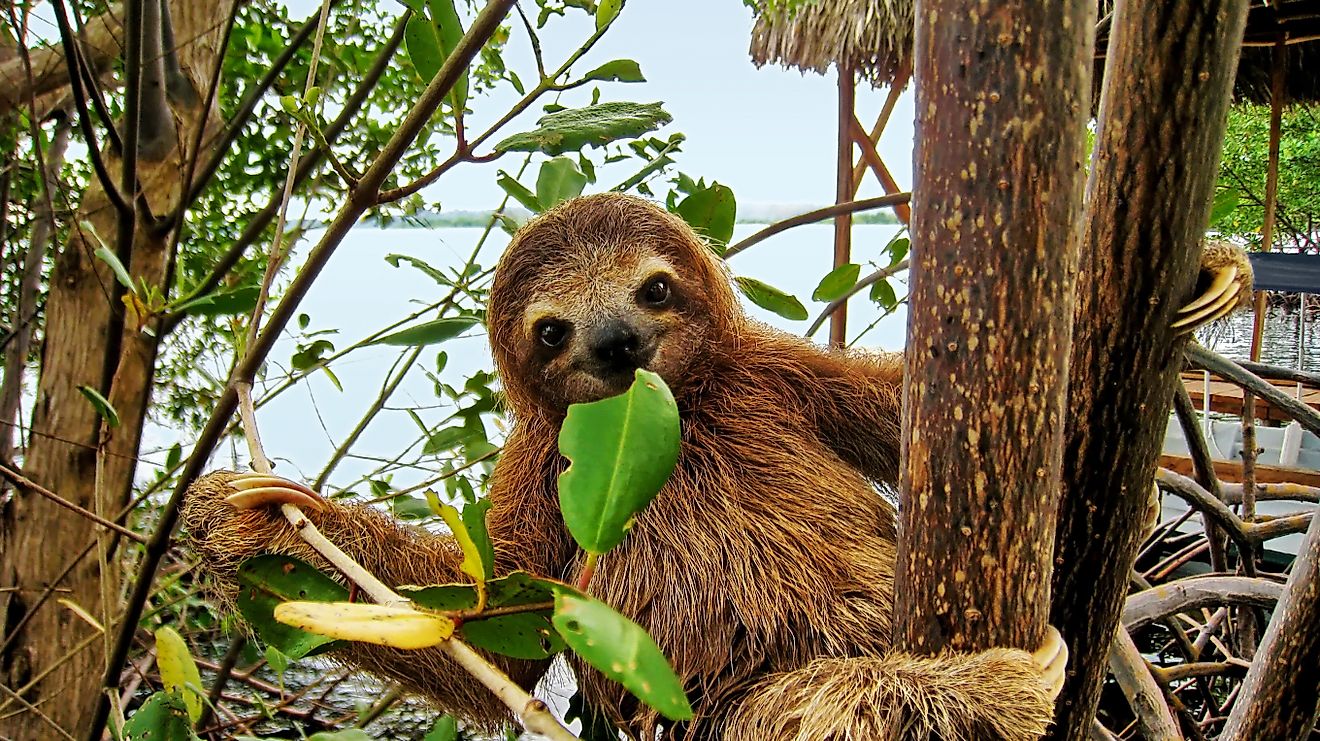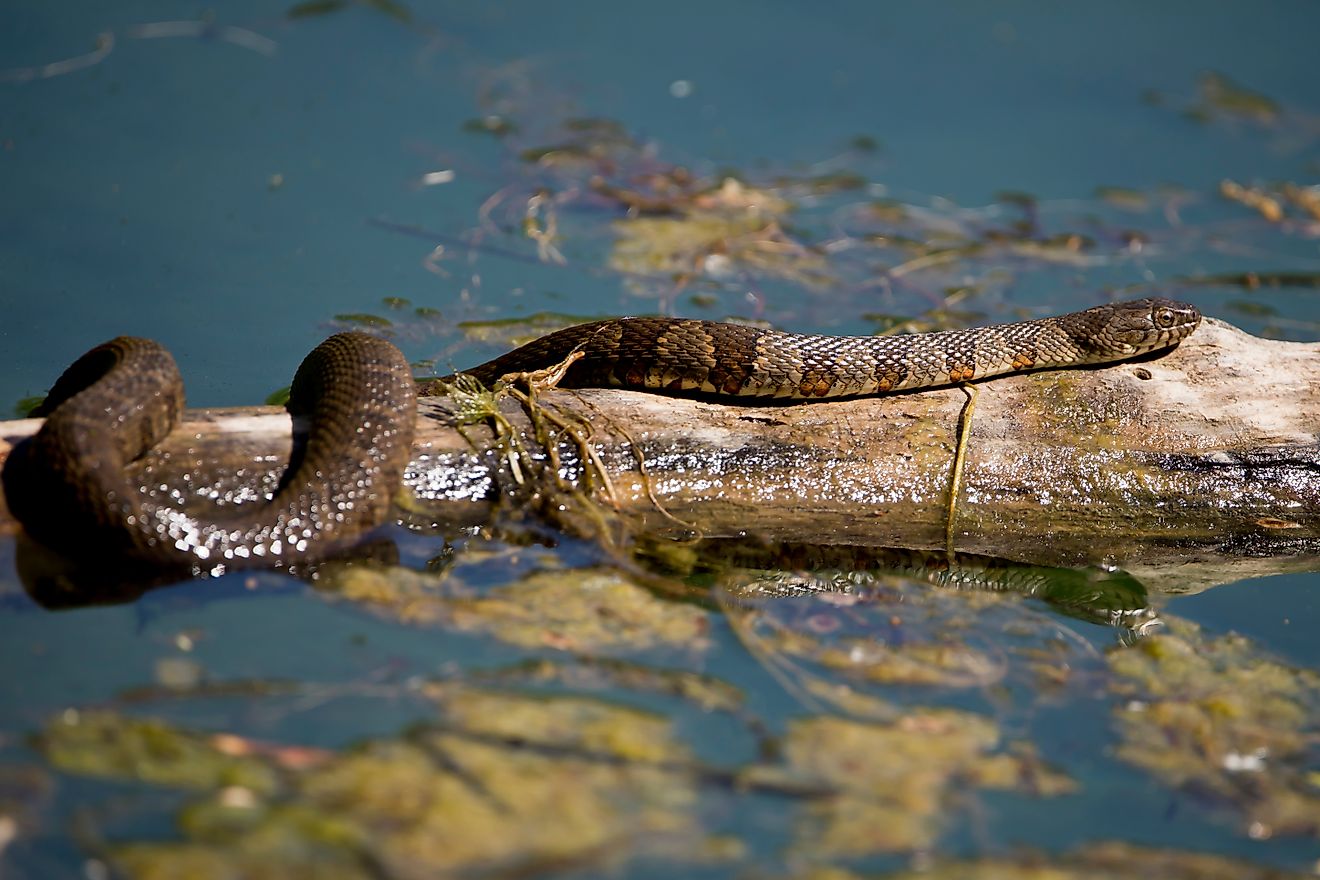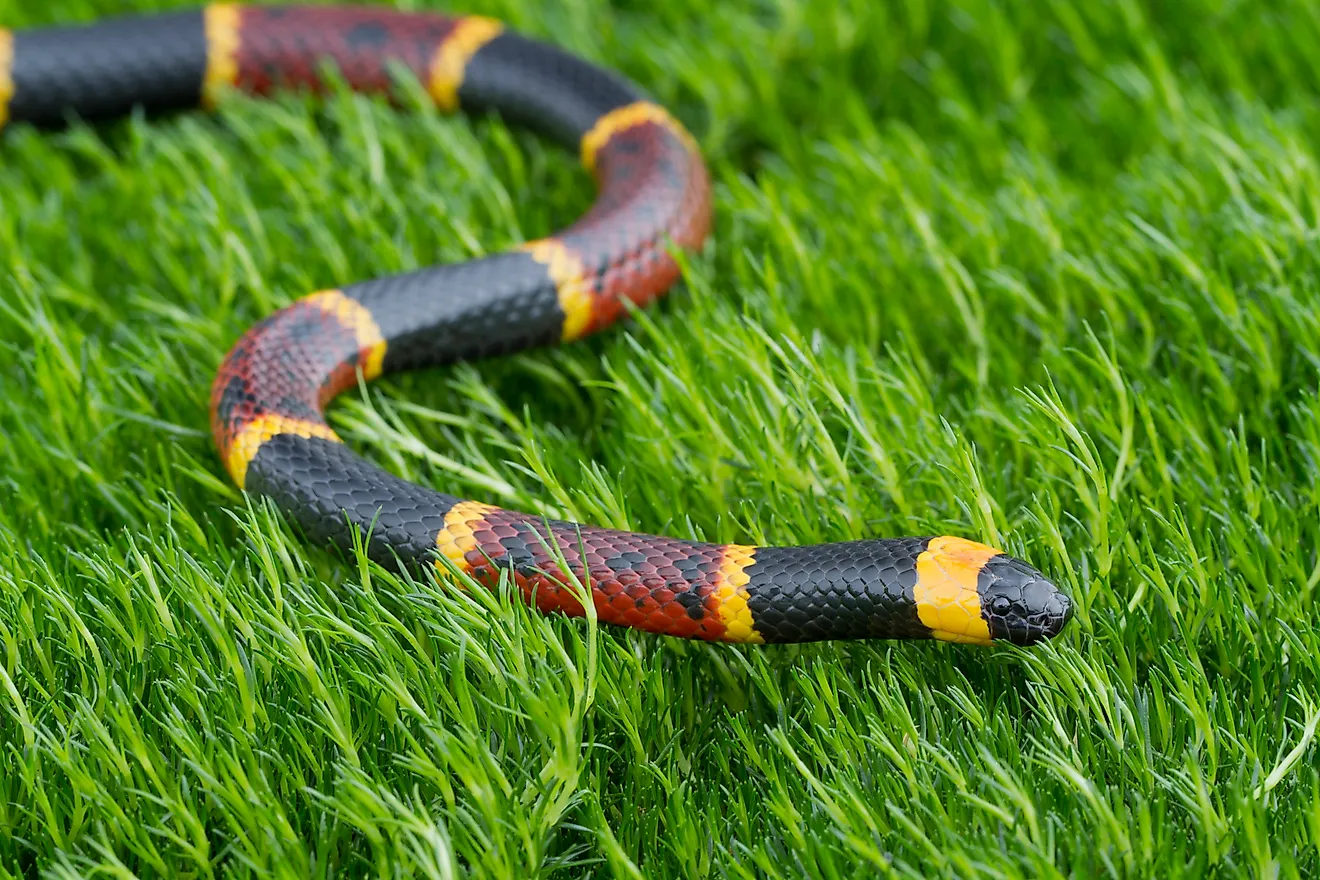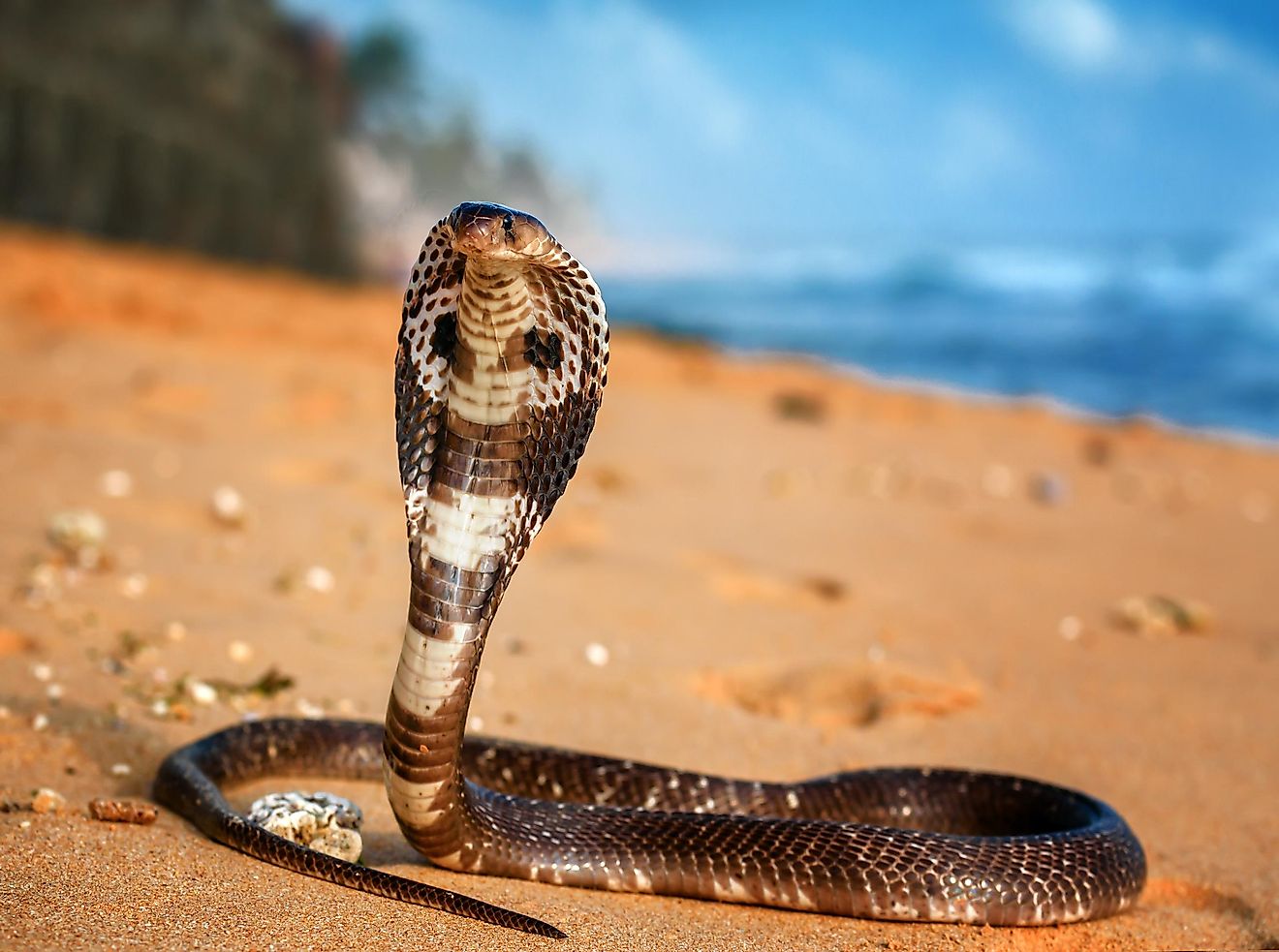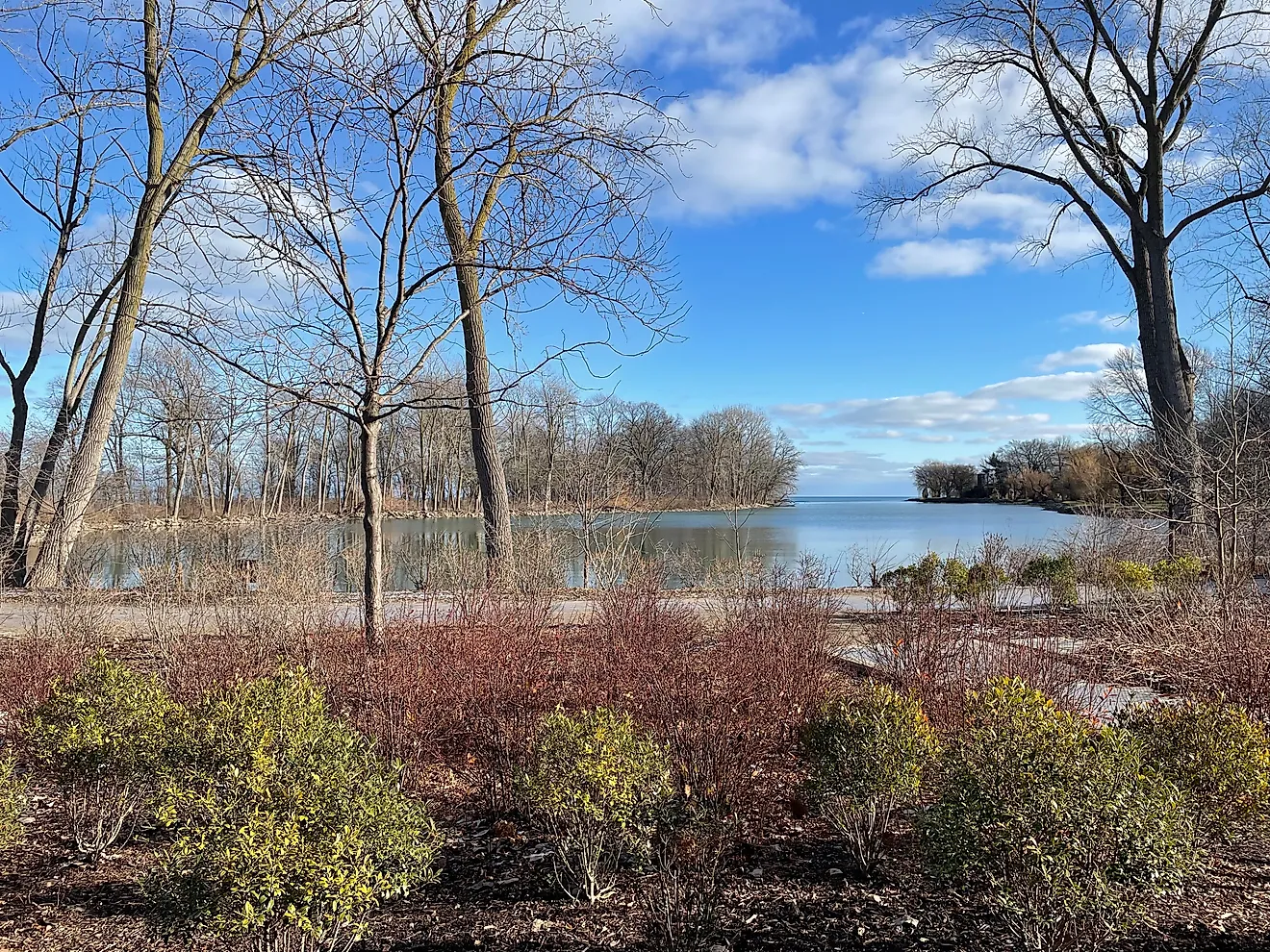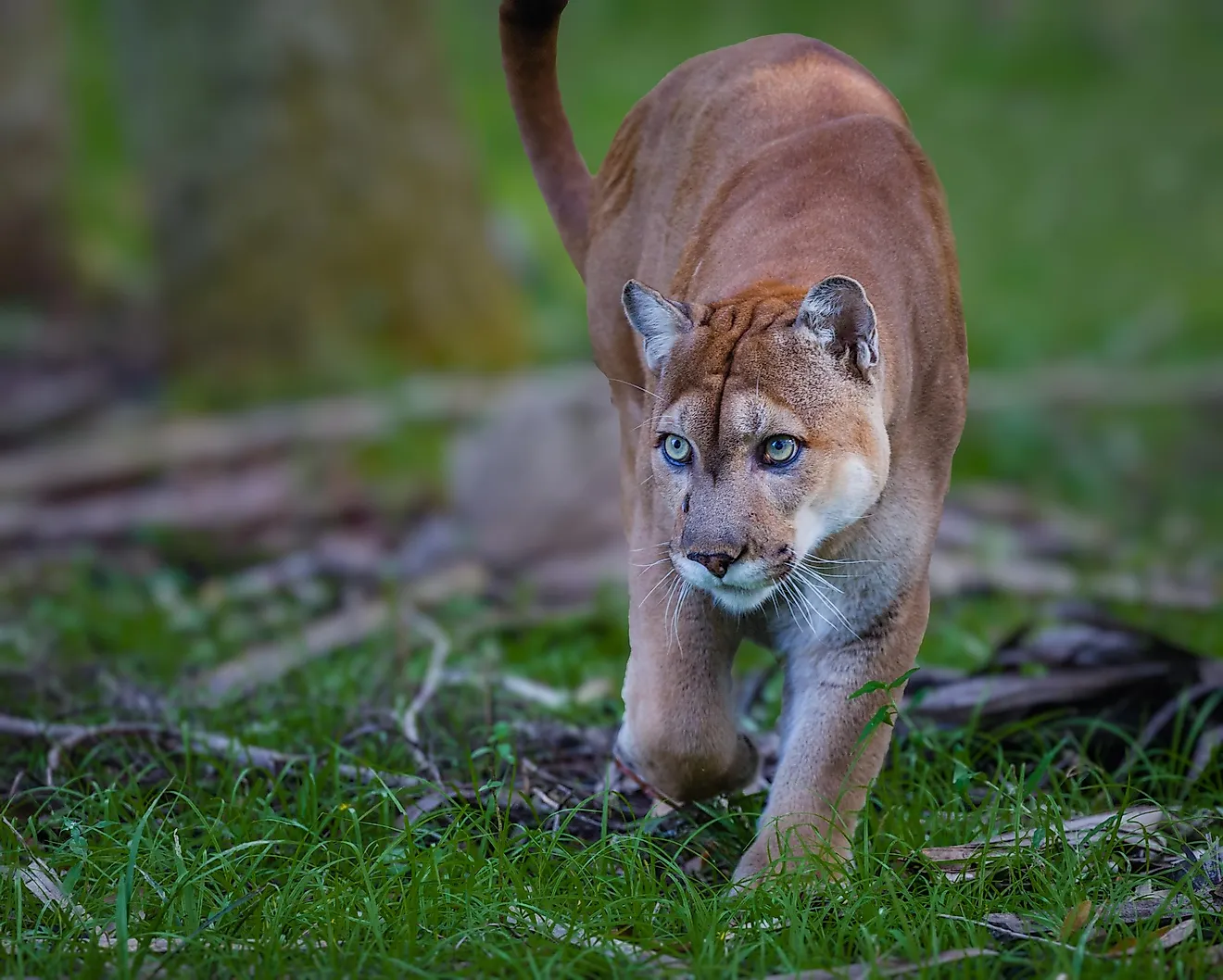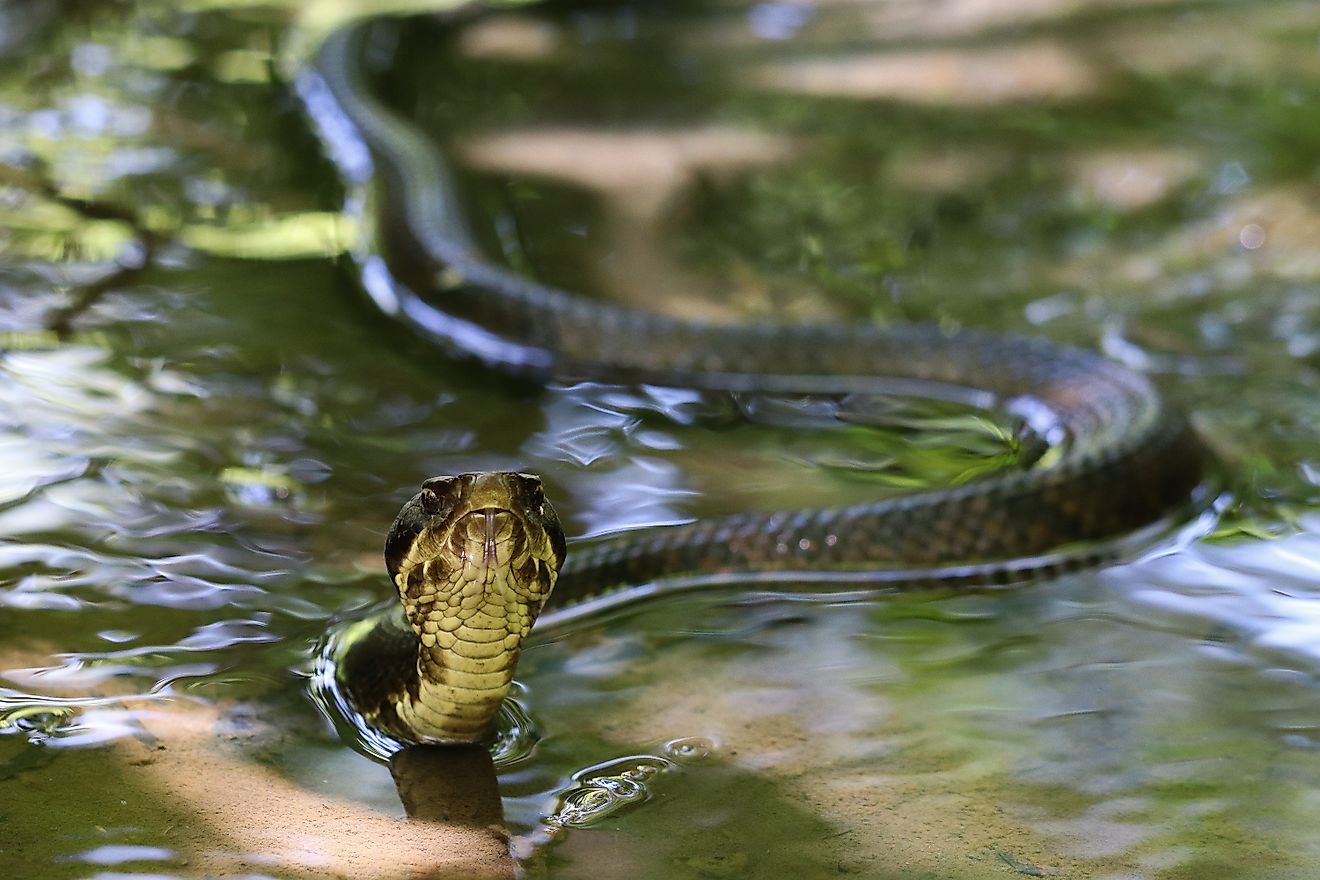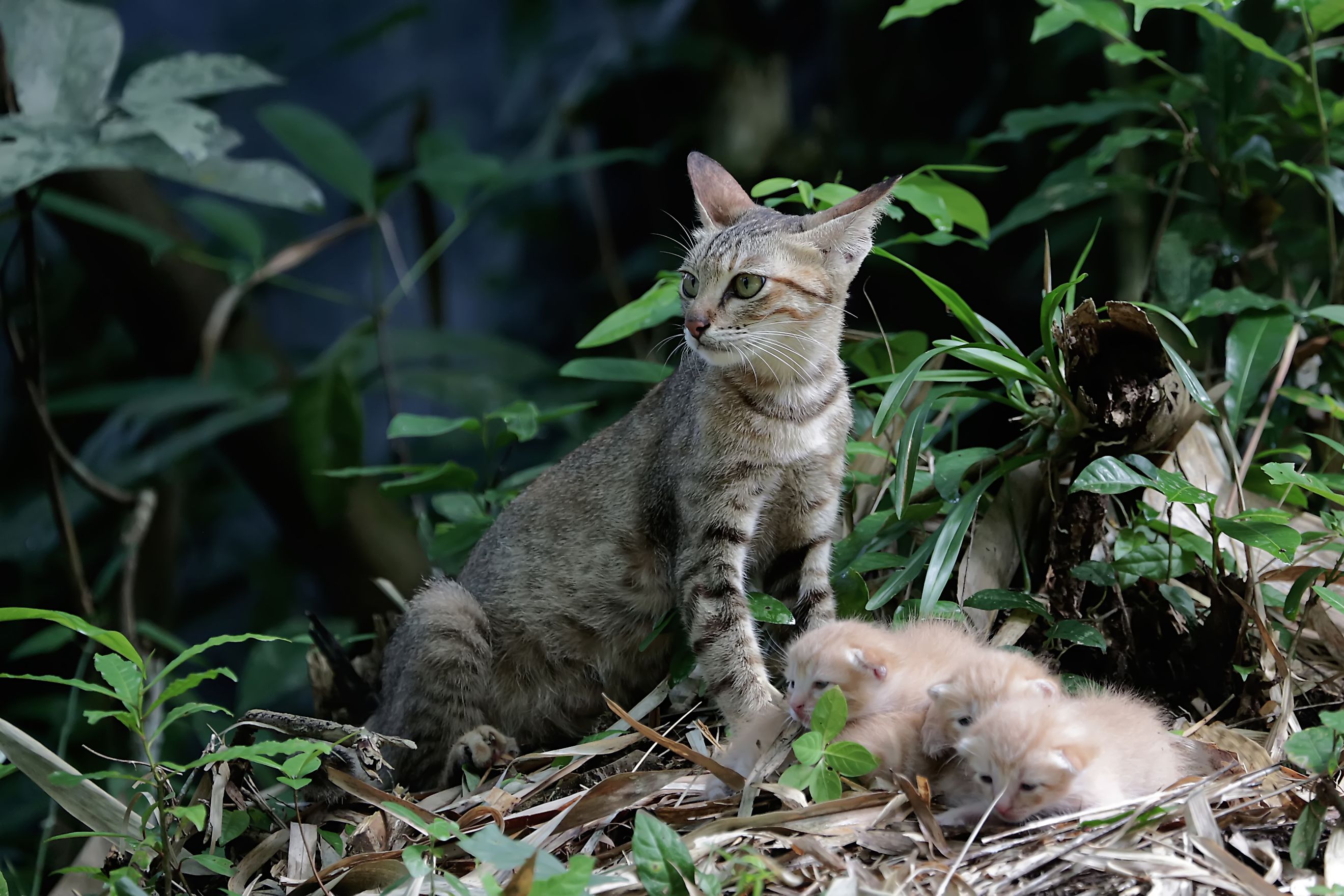
These Invasive Species Are Threatening America's Wildlife
The United States is fighting an ongoing battle against invasive species that threaten ecosystems, agriculture, and native wildlife. Invasive species are plants, animals, and other organisms that are not native to an area but have been introduced intentionally or accidentally and can harm the ecosystem. According to the National Wildlife Federation, invasive species pose serious threats to approximately 42% of endangered or threatened species. Among the most problematic are feral swine, which vigorously uproot crops and damage ecosystems; Burmese pythons, which has long devastated the natural fauna of the majestic Florida Everglades; and domestic cats, which are often held responsible for the decline in local bird and small mammal populations. Other invasive species include European starlings, the nutria, Asian carp, and gypsy moths. These animals collectively highlight the urgent need to raise public awareness about invasive species threatening America’s wildlife.
Feral Swine
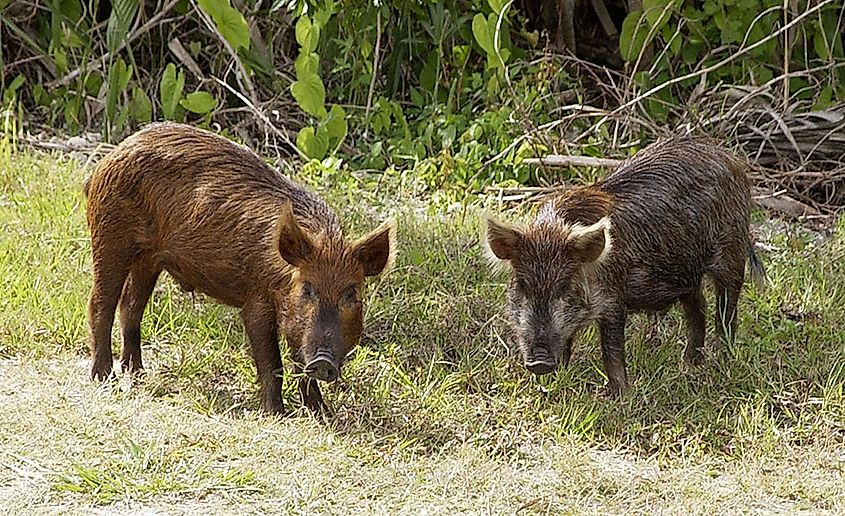
Feral swine (Sus scrofa) are not native to the Americas. Also known as wild pigs, wild boars, and wild hogs, they descend from escaped or released pigs first brought to the continent from Europe by explorers to be used as a food source. Today, they are considered one of the most destructive animal species in the US, causing widespread damage to natural resources. The wild pigs eat large amounts of vegetation and destroy plants by rooting them up and exhibiting other destructive behaviors. With no real predators outside of humans in many of the areas in which they are currently found, their population is rapidly increasing. Wild sows average two litters per year and can give birth to as many as 12 offspring. The number of counties with wild hog populations in the United States has tripled since the 1980s, what authorities call a "feral swine bomb." The reported numbers have nearly tripled between 1982 (about 550 reports) and 2023 (about 1,500 reports). The states with the highest feral swine population are Texas, Georgia, Florida, Louisiana, and Oklahoma.
Burmese Pythons
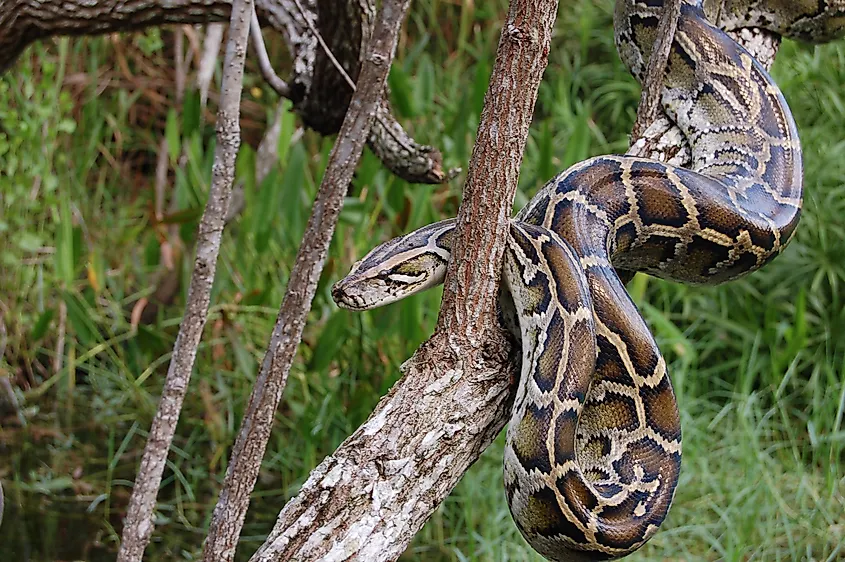
Burmese pythons (Python bivittatus) were first introduced to Florida in the 1970s as part of the illegal exotic pet trade. Owners most likely released them accidentally — although in many cases, it was intentional — into the Everglades when the snakes became too big to handle. There have also been persistent rumors that the snakes gained a foothold in the wetlands due to the destruction of a python breeding center during Hurricane Andrew, one of the worst hurricanes to hit Florida, although experts say the species had likely already gained a foothold in the region prior to that natural disaster. While the snakes are native to southeast Asia, where their population is kept in check by large carnivores such as tigers or crocodiles, the Burmese python is an apex predator in the Florida Everglades, lying in wait to ambush its prey, which includes alligators, bobcats, white-tailed deer, and endangered species, including Key Largo woodrats. It is one of the largest snakes in the world, growing to more than 20 feet long and weighing as much as 200 pounds.
Cats
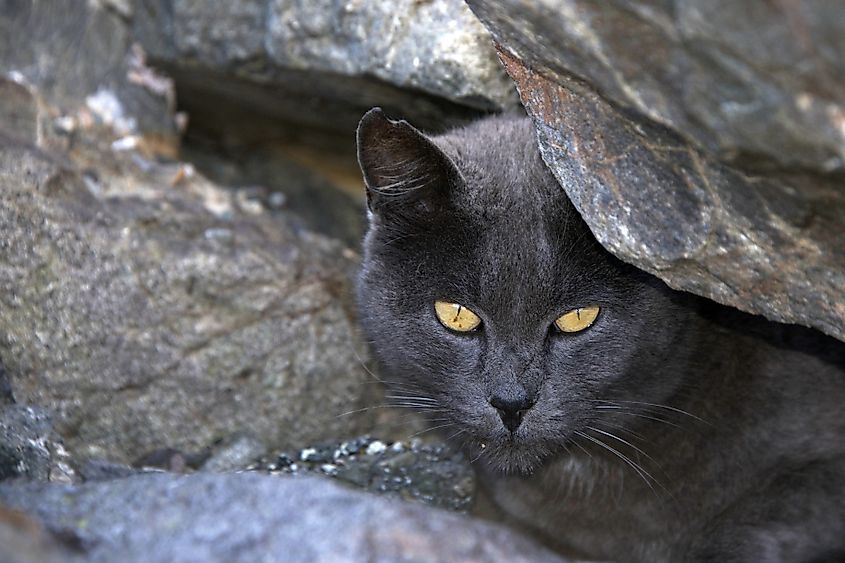
Ecologists consider domestic cats (Felis catus) one of the worst invasive species in the world. Cats were first introduced to the US by European colonists in the 1600s, carried across the Atlantic Ocean aboard ships to control the rodent population. Today, cats inhabit every continent except Antarctica and are the among the most widely distributed species on the planet. Between 60 million and 100 million free-range and often unowned cats kill an estimated 1 billion birds to 4 billion birds in the United States alone, which has devastating consequences for threatened species, like the wood thrush, and the least tern. In some studies, cats were seen eating young green sea turtles. Cats, including feral cats, are also responsible for spreading diseases that impact the health of wildlife and humans, including toxoplasmosis, plague, and rabies.
European Starlings
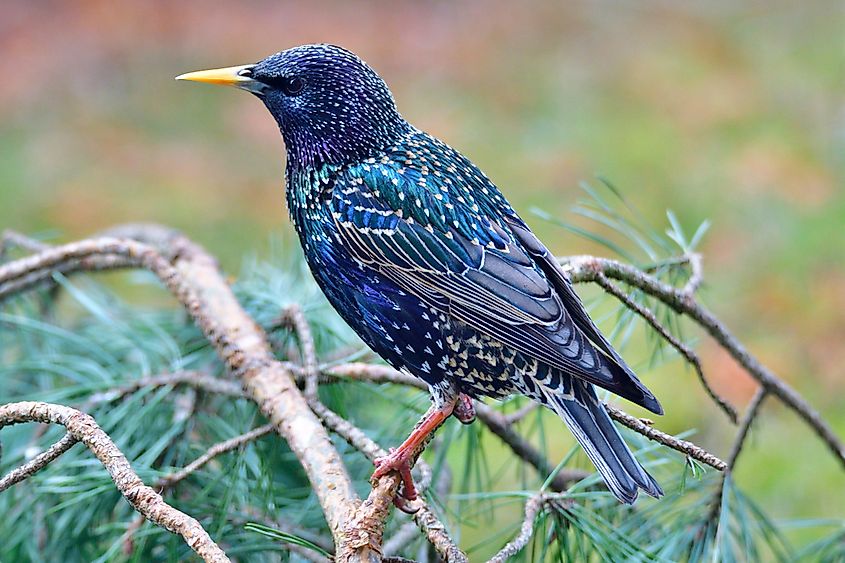
With a tale that could have been written by the Bard himself, European starlings (Sturnus vulgaris) were introduced to the US in 1890 by Eugene Schieffelin, who wanted to introduce every bird species mentioned in the works of William Shakespeare to North America. In an infamous effort, Schieffelin released dozens of starlings in Central Park in New York City. By all accounts, it was a highly successful experiment; more than 200 million European starlings now range from Alaska to Mexico today. Starlings cause millions of dollars of damage as they travel in flocks up to 50,000 strong, including killing larger native birds and their young when competing for a nest, transmitting parasites and diseases, including E. coli, and causing tremendous damage to crops and vineyards.
Nutria
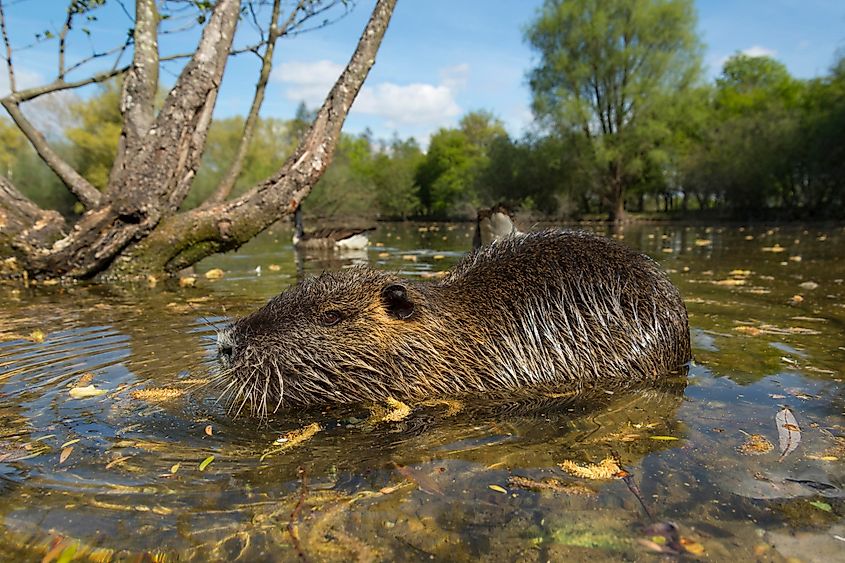
The nutria (Myocastor coypus) is a large, semi-aquatic rodent native to South America. Brought to the US in 1889 for its fur, thousands of nutrias escaped or were released when their keepers could no longer afford to house them; this problem intensified when the fur market collapsed in the 1940s. Today, they are found in more than 20 states, including California, the Gulf Coast and Atlantic Coast states, and the Pacific Northwest, where they damage vegetation and crops and destabilize and destroy the banks of lakes, ditches, and other bodies of water. Of most concern is the damage they cause to marshes, wetlands, and other fragile ecosystems where threatened and endangered native wildlife make their homes.
Asian Carp
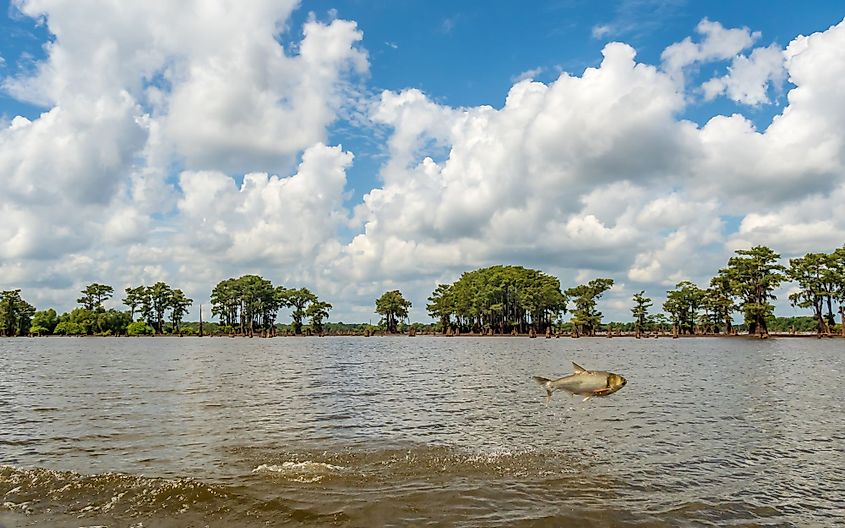
Asian carp (there are several taxonomies) are among the world's 10 most harmful invasive species. Native to Europe and Asia, carp were imported to the U.S. in the 1960s and 1970s to control algae blooms by consuming plankton in ponds and wastewater treatment plants. Flood waters eventually caused the captive fish to escape into local lakes, rivers, and streams, most notably the Mississippi River basin and its tributaries, including the Ohio and Missouri rivers. Today, four types are present in waters across the United States: bighead carp, black carp, grass carp, and silver carp. The carp threaten native species by outcompeting them for food and habitat and act as carriers of parasites or diseases that can kill native fish species.
Gypsy Moths

Another experiment gone awry, the invasive Gypsy moth (Lymantria dispar), or spongy moth, was accidentally released in North America in the 1860s by Étienne Léopold Trouvelot, a French lithographer who lived in Massachusetts and spent his spare time studying silk moths. In an attempt to breed a heartier silkworm to satisfy the global demand for silk, he imported the gypsy moths from Europe to America, where some ultimately escaped from his backyard lab. Today, the moths are firmly established in the forests of the northeastern United States, including throughout Maine, New Hampshire, Vermont, and others. In Canada, the moths are found across southern Ontario and Quebec, where they can cause complete defoliation of hardwood trees.
Summary
The US faces severe ecological threats from invasive species, including feral swine, which destroys vegetation and wetlands; Burmese pythons, which are decimating native wildlife in Florida’s Everglades; and domestic cats, which killing billions of birds annually and spread disease. European starlings, released in New York in the 1890s, compete with native birds and damage crops, whereas nutrias destroy wetlands and marshes. Asian carp, introduced to control algae, dominate US waterways and outcompete native fish, and gypsy moths defoliate forests in the Northeast. And remember: These are just a few of the invasive species threatening America’s wildlife.

